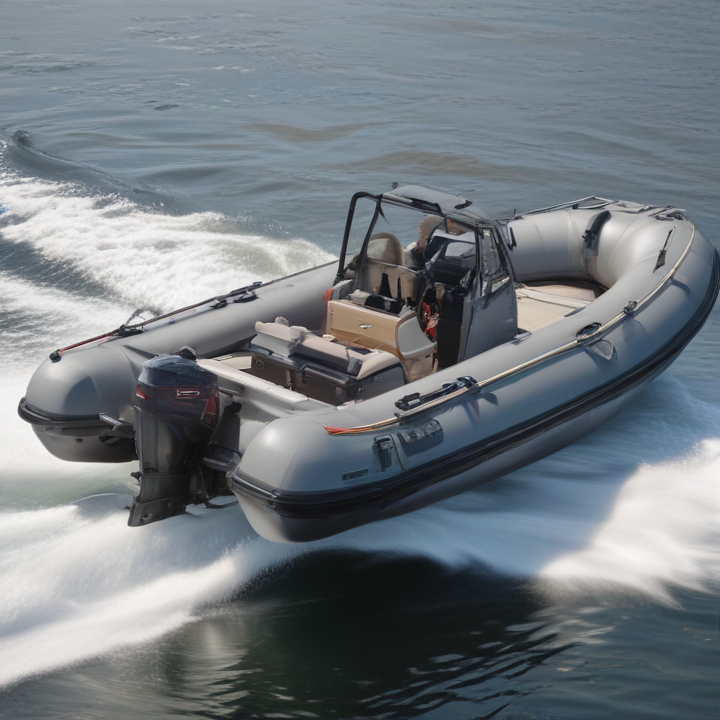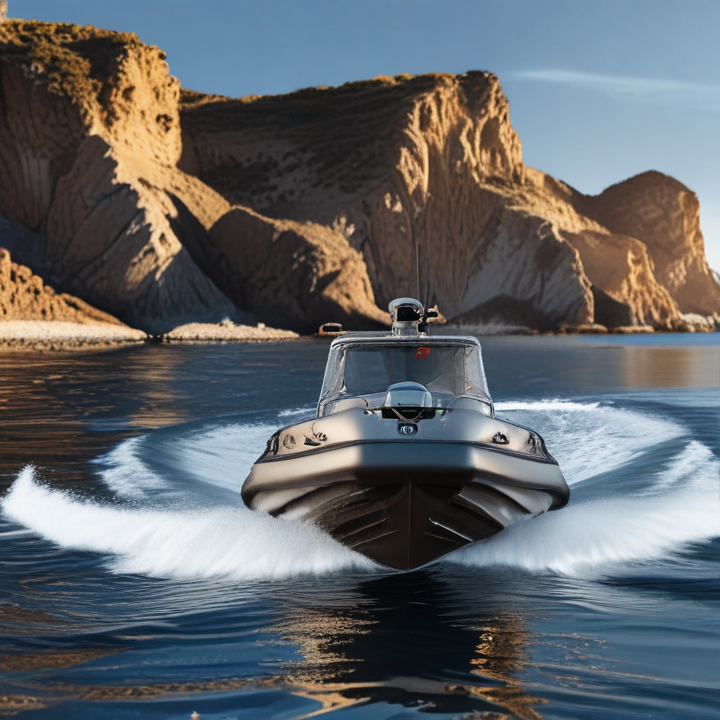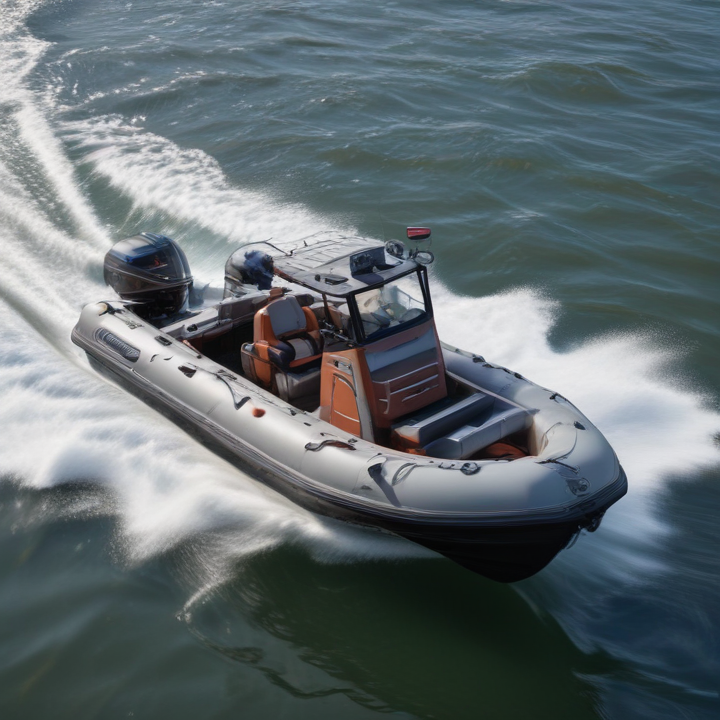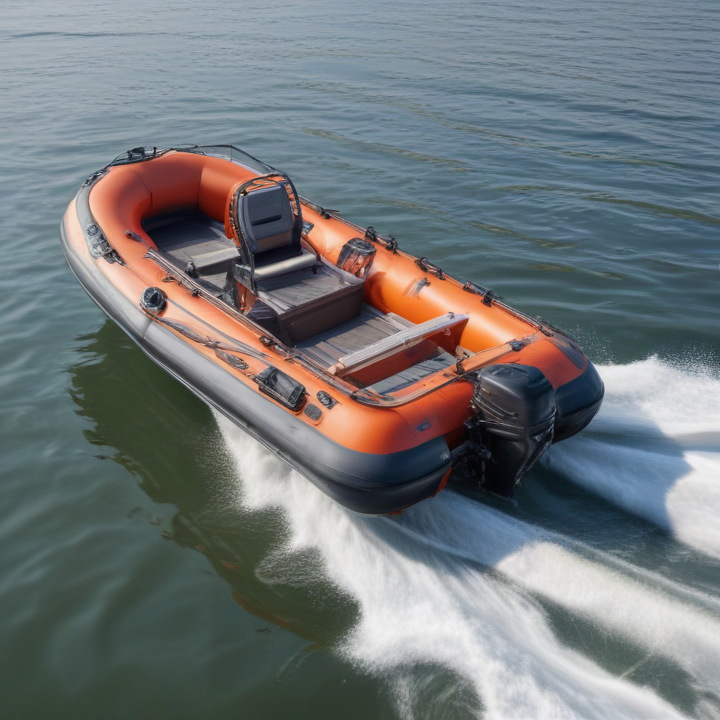Rigid Inflatable Boats (RIB) Safety Certifications
Rigid Inflatable Boats (RIBs) are renowned for their stability, durability, and performance in various maritime conditions. Ensuring safety through certifications is crucial for manufacturers, operators, and passengers.
1. CE Marking: In the European Union, RIBs must carry CE marking, indicating compliance with EU directives related to safety, health, and environmental protection. They are evaluated under the Recreational Craft Directive (RCD) 2013/53/EU, which assesses parameters like buoyancy, stability, and structural integrity.
2. ISO Certification: Many RIBs adhere to the International Organization for Standardization (ISO) standards. ISO 6185 focuses specifically on inflatable boats, setting criteria for design, construction, and performance. ISO 12217 addresses stability and buoyancy assessment methods.
3. US Coast Guard (USCG) Compliance: In the United States, RIBs must comply with USCG regulations, addressing essential safety features such as flotation requirements, fire protection, and navigation lights. Compliance ensures the boat meets the necessary operational safety standards.
4. NMMA Certification: The National Marine Manufacturers Association (NMMA) certification signifies that a RIB conforms to standards set by the American Boat and Yacht Council (ABYC) and the USCG. This rigorous inspection process includes checks on electrical systems, fuel systems, and overall construction.
5. Safety of Life at Sea (SOLAS): For RIBs used in commercial applications, compliance with SOLAS regulations may be required. These standards, set by the International Maritime Organization (IMO), are critical for ensuring the safety of vessels involved in international waters.
6. Classification Societies: Organizations like Lloyd’s Register, DNV GL, and Bureau Veritas offer certification for commercial RIBs. Their standards cover a wide range of factors, including hull integrity, machinery, and safety systems.
Adhering to these certifications ensures that RIBs comply with essential safety standards, enhancing their reliability and security for a wide range of maritime activities.
List Reference Technical Parameters of “Rigid Inflatable Boats (RIB)”
Rigid Inflatable Boats (RIBs) combine a solid hull with inflatable tubes, making them both robust and buoyant. Here are some key technical parameters:
Length Overall (LOA)
– Range: Typically between 3 to 12 meters (10 to 39 feet).
– Impact: Determines capacity and seaworthiness.
Beam Width
– Range: 1.5 to 3.5 meters (5 to 11.5 feet).
– Impact: Affects stability and deck space.
Weight
– Range: 100 kg to 2000 kg (220 lbs to 4400 lbs), depending on size and materials.
– Impact: Influences transportability and performance.
Tube Diameter
– Range: 0.3 to 0.6 meters (1 to 2 feet).
– Impact: Contributes to flotation and stability.
Tube Material
– Options: Hypalon, PVC, and Polyurethane.
– Impact: Affects durability and maintenance.
Chamber Count
– Range: 3 to 7 individual air chambers.
– Impact: Enhances safety by compartmentalizing air.
Hull Material
– Common Materials: Fiberglass, Aluminum, Composite.
– Impact: Affects strength, weight, and maintenance.
Engine Type and Power
– Range: 25 HP to 600 HP.
– Options: Outboard, Inboard, and Jet drives.
– Impact: Determines speed, fuel efficiency, and application.
Maximum Speed
– Range: 20 to 70 knots.
– Impact: Influences operational scope (recreational vs. commercial/military).
Fuel Capacity
– Range: 50 to 500 liters (13 to 132 gallons).
– Impact: Affects range and operational time.
Load Capacity
– Range: 300 kg to 2500 kg (660 lbs to 5500 lbs).
– Impact: Influences the number of passengers and gear.
Draft
– Range: 0.3 to 0.9 meters (1 to 3 feet).
– Impact: Affects shallow-water maneuverability.
Operational Range
– Influence: Determined by fuel capacity and fuel efficiency.
Application
– Variety: Rescue, Military, Patrol, Recreational, Diving.
– Impact: Design and features specific to use-case.
By optimizing these parameters, RIBs offer versatility, durability, and performance suitable for diverse maritime applications.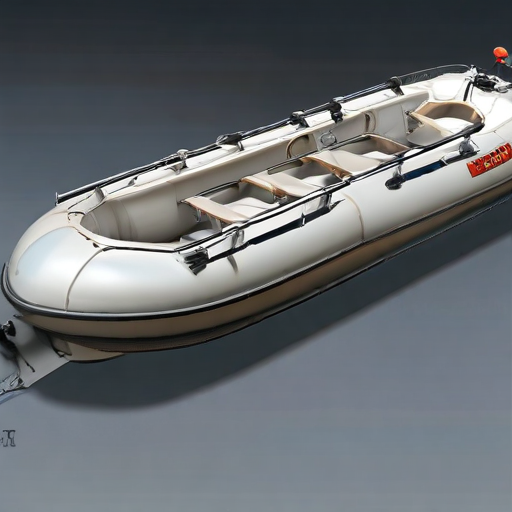
List Product features of “Rigid Inflatable Boats (RIB)”
Rigid Inflatable Boats (RIBs) are versatile and high-performance vessels widely used for both recreational and professional purposes. Here are some of their standout features:
1. Durable Construction: RIBs combine a rigid hull, usually made of lightweight yet sturdy materials like fiberglass or aluminum, with inflatable tubes, often made from Hypalon or PVC. This blend ensures durability even in harsh conditions.
2. Superior Stability: The inflatable tubes around the rigid hull provide exceptional stability, making RIBs capable of handling rough waters with minimal stress, thereby offering a safer ride.
3. High Buoyancy: The inflatable elements significantly enhance buoyancy, allowing RIBs to support heavy loads without compromising performance. This characteristic also makes them highly resistant to capsizing.
4. Lightweight Design: Despite their rugged construction, RIBs are remarkably lightweight. This makes them easier to tow, launch, and handle both on and off the water.
5. Enhanced Performance: These boats are known for their impressive speed and maneuverability, thanks to their lightweight structure and hydrodynamic hull design. They can achieve high speeds quickly and are highly responsive to steering inputs.
6. Versatile Use: RIBs are suited for various applications, including recreational boating, diving, search and rescue operations, military use, and commercial purposes like ferrying passengers or cargo.
7. Low Maintenance: The materials used in RIB construction are resistant to sun, salt, and punctures, requiring minimal maintenance. The inflatable tubes can be easily patched or replaced if damaged.
8. Safety Features: Many RIBs come equipped with multiple air chambers within the tubes. This design ensures that even if one chamber deflates, the boat remains functional and afloat.
9. Customizable: RIBs often offer a high degree of customization. Options can include different seating arrangements, storage compartments, navigation systems, and more to tailor the boat to specific needs.
In summary, RIBs are prized for their durability, performance, stability, and versatility, making them a popular choice for a wide range of maritime activities.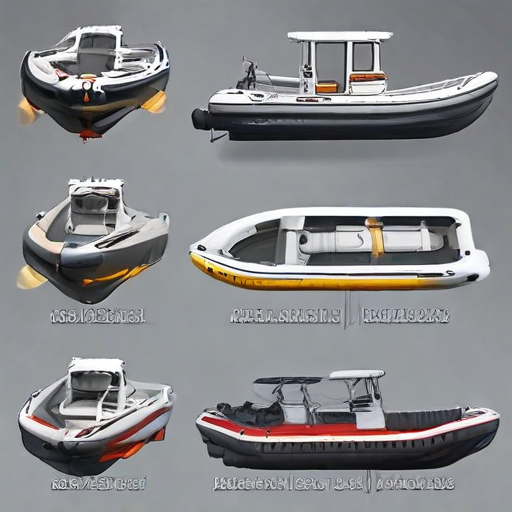
List Application of “Rigid Inflatable Boats (RIB)”
Rigid Inflatable Boats (RIBs) are versatile and durable watercraft with a rigid hull and inflatable tubes, offering numerous applications in various fields due to their stability, speed, and maneuverability. Below are some key applications:
1. Search and Rescue Operations: RIBs are commonly used by coast guards and rescue organizations for rapid response in emergency situations due to their speed and ability to operate in rough conditions.
2. Law Enforcement: Police and customs agencies use RIBs for patrolling, border control, and intercepting illegal activities such as smuggling and human trafficking due to their agility and reliability.
3. Military Operations: Naval forces utilize RIBs for special operations, including troop transport, reconnaissance, and rapid deployment, benefiting from their stealth and versatility.
4. Diving and Maritime Research: RIBs are favored by marine biologists and researchers for accessing remote areas, conducting surveys, and supporting diving activities thanks to their stability and ease of deployment.
5. Commercial Use: Industries like offshore oil and gas, wind farms, and construction employ RIBs for personnel transfer, equipment transport, and inspection tasks, especially in challenging offshore environments.
6. Recreational Activities: Boating enthusiasts use RIBs for leisure activities such as fishing, water sports, and exploring coastal waters, attracted by their performance and safety features.
7. Tourism and Eco-Tourism: RIBs serve in the tourism industry to offer guided tours, wildlife viewing, and adventure trips due to their capacity to navigate close to shorelines and confined spaces.
8. Emergency Medical Services: Some emergency medical units deploy RIBs for rapid patient transport from remote or difficult-to-reach locations to medical facilities.
RIBs’ adaptability to various tasks and environments makes them an invaluable asset across these diverse applications.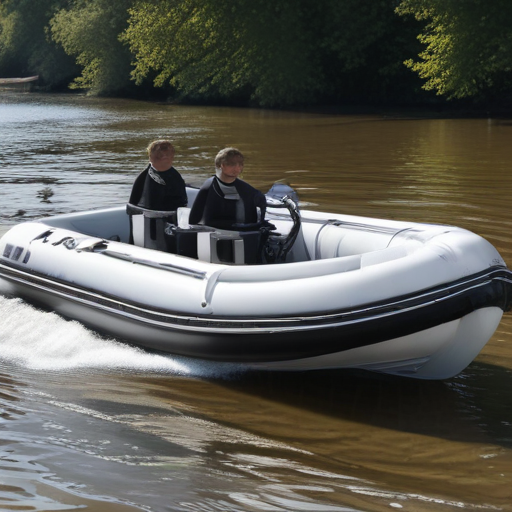
List Various Types of “Rigid Inflatable Boats (RIB)”
Rigid Inflatable Boats (RIBs) are versatile watercraft known for their durability, stability, and high performance. Here are some types of RIBs categorized by their intended use and design features:
1. Leisure RIBs:
– Family RIBs: Designed for recreational use, typically featuring comfortable seating, ample storage space, and options for sunbathing areas and swimming platforms.
– Sports RIBs: Primarily used for high-speed activities, these RIBs are equipped with powerful engines and streamlined designs for water skiing, wakeboarding, and other water sports.
2. Professional RIBs:
– Rescue RIBs: Built for search and rescue operations, these boats are often equipped with reinforced hulls, advanced navigation systems, and ample deck space for carrying injured individuals or equipment.
– Patrol RIBs: Used by law enforcement and coast guards for patrolling and surveillance, featuring rugged construction, high maneuverability, and often outfitted with communication and radar systems.
3. Commercial RIBs:
– Passenger Transport RIBs: Designed for ferrying passengers, these boats often have multiple rows of seating and are used for short-distance coastal trips or as tenders for larger ships.
– Dive Support RIBs: These boats are tailored for scuba diving operations, featuring equipment racks, ease of access to the water, and space for divers and their gear.
4. Specialty RIBs:
– Military RIBs: Engineered for defense purposes, these RIBs can be used for troop transport, reconnaissance, and special operations, offering robust construction, stealth capabilities, and advanced technological systems.
– Expedition RIBs: Designed for exploration and research, often built to tackle extreme weather conditions and equipped with scientific instruments, long-range fuel tanks, and provisions for extended voyages.
5. Custom RIBs:
– Luxury RIBs: High-end RIBs tailored for affluent buyers, featuring luxurious amenities such as premium seating, entertainment systems, and high-quality finishes.
– Fishing RIBs: Equipped for anglers, these RIBs often include fishing rod holders, live wells, and ample deck space for casting and storing gear.
Each type of RIB is designed to meet specific requirements, ensuring they excel in their respective environments.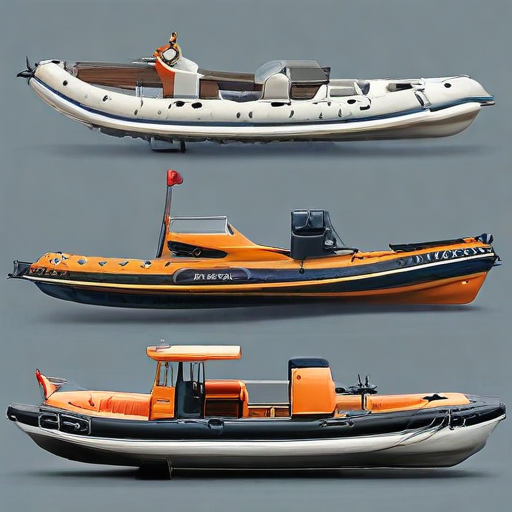
Rigid Inflatable Boats (RIB) Accessories Upgrades and Custom Manufacturing Options
Rigid Inflatable Boats (RIBs) are renowned for their versatility, durability, and superior performance in various marine conditions. Enhancing these watercraft with accessories, upgrades, and custom manufacturing options can significantly boost their utility and comfort. Here are some key options:
1. Electronics and Navigation:
– GPS and Sonar Systems: Modern navigation tools improve safety and efficiency.
– Marine Radios: Essential for communication, especially in emergencies.
– Fish Finders: Ideal for fishing enthusiasts.
2. Safety Gear:
– Life Rafts and Jackets: Compliance with safety regulations and enhanced security.
– EPIRBs (Emergency Position Indicating Radio Beacons): Crucial for emergencies.
– Fire Extinguishers: Essential for combating onboard fires.
3. Seating and Consoles:
– Shock-Absorbing Seats: Enhance comfort during high-speed travel.
– Custom Consoles: Tailored to fit specific equipment and navigation preferences.
4. Hull and Tube Enhancements:
– Reinforced Hulls: For extra durability and longevity.
– Custom Tube Colors and Logos: Personalize the boat’s aesthetic.
5. Storage Solutions:
– Under-seat Storage: Maximizes space utilization.
– Dry Boxes: Keeps essentials dry and secure.
6. Performance Upgrades:
– High-Performance Engines: Boost power and speed.
– Hydraulic Steering Systems: Enhance maneuverability.
7. Comfort Additions:
– Bimini Tops: Provide shade and protection from the elements.
– Deck Lighting: Improves visibility and ambiance.
8. Fishing and Diving Gear:
– Rod Holders and Live Wells: Cater to fishing needs.
– Dive Racks and Ladders: Facilitate easier access for divers.
When opting for custom manufacturing, consider collaborating with reputable manufacturers who can tailor the RIB to meet specific requirements, ensuring maximum functionality and satisfaction. With the right upgrades and accessories, an already impressive RIB can be transformed to match any specific application, from leisure cruising to professional operations.
List Quality Control and The Manufacturing Process of “Rigid Inflatable Boats (RIB)”
Quality Control and Manufacturing Process of Rigid Inflatable Boats (RIB)
#### Manufacturing Process:
1. Design and Planning:
– Engineers use CAD software to create precise designs and specifications.
– Material selection involves choosing high-quality CSM or Neoprene for the inflatable tubes and robust materials like fiberglass or aluminum for the hull.
2. Hull Construction:
– Hull molds are created based on design specifications.
– Layers of fiberglass are placed in the mold and coated with resin for reinforcement.
– The mold is heated and cured to solidify the hull.
3. Inflatable Tube Fabrication:
– Fabric is cut according to patterns.
– Seams are glued or thermally welded for airtight and watertight integrity.
– The fabric is tested for air retention before assembly.
4. Assembly:
– The inflatable tubes are attached to the hull using adhesive.
– Adhesive is applied meticulously to prevent leaks and ensure a secure fit.
– Additional components such as consoles, seating, and hardware are installed.
5. Finishing and Testing:
– The entire boat is inspected for structural integrity.
– Aesthetic and functional components are polished and finalized.
– Full inflation tests are carried out to check for leaks or defects.
#### Quality Control:
1. Material Inspection:
– Raw materials undergo rigorous quality checks to meet specified standards.
– Defective materials are rejected before they enter the production cycle.
2. In-Process Inspection:
– Continuous monitoring is conducted during the fabrication of hulls and tubes.
– Sophisticated tools and techniques like ultrasonic testing ensure the integrity of welds and seams.
3. Pressure Testing:
– Inflatable tubes are inflated and soaked in water to identify leaks.
– Pressure gauges monitor stability under various conditions.
4. Final Inspection:
– A comprehensive examination of the fully assembled RIB is performed.
– Functional tests such as buoyancy, engine performance, and maneuverability are conducted in controlled environments.
– Any issues are addressed before delivery.
5. Certification:
– RIBs are certified to meet international safety and quality standards, such as ISO 6185.
– Periodic audits and updates to manufacturing processes ensure ongoing compliance and improvement.
Effective quality control and a meticulous manufacturing process ensure that RIBs deliver reliability, safety, and performance in various marine conditions.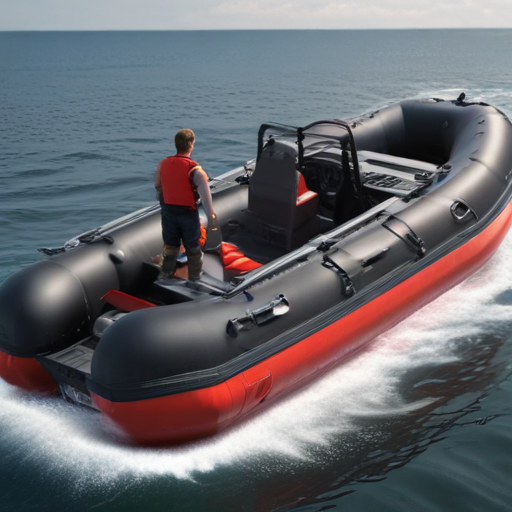
How to use “Rigid Inflatable Boats (RIB)”
Using a Rigid Inflatable Boat (RIB) involves several key steps to ensure safety and efficiency. Here’s a brief guide:
1. Pre-Departure Checks:
– Inspection: Check the hull for damages and ensure the inflatable tubes are properly inflated.
– Safety Gear: Confirm that you have all required safety equipment, such as life jackets, flares, a first aid kit, and a fire extinguisher.
– Fuel and Engine: Ensure the fuel tank is full and the engine is in good working condition.
2. Launching:
– Ramp: Use a boat ramp to launch the RIB. Back your trailer into the water until the boat floats.
– Unloading: Release the winch line and guide the boat off the trailer into the water.
– Parking: Park your vehicle and trailer in a designated area.
3. Boarding:
– Stabilize: Have someone hold the boat steady while others board to avoid tipping.
– Load Distribution: Distribute weight evenly to maintain balance.
4. Starting the Engine:
– Ventilate: Open the engine compartment to ventilate if applicable.
– Priming: Prime the fuel system by squeezing the primer bulb.
– Ignition: Insert the key and turn it to start the engine. Ensure the kill switch is attached to your wrist for safety.
5. Navigation:
– Slow Speeds: Start at slow speeds to get a feel for the boat’s handling.
– Visibility: Maintain a clear view of the water ahead.
– Rules and Regulations: Follow local boating regulations and navigational rules.
6. Mooring and Docking:
– Approach: Approach docks and mooring areas at a slow speed.
– Tie Up: Use ropes to secure the boat to docks or moors.
7. After Use:
– Clean: Rinse the boat with fresh water to remove salt and debris.
– Storage: Store the RIB in a dry, shaded area if possible.
By following these steps, you can efficiently and safely operate a Rigid Inflatable Boat.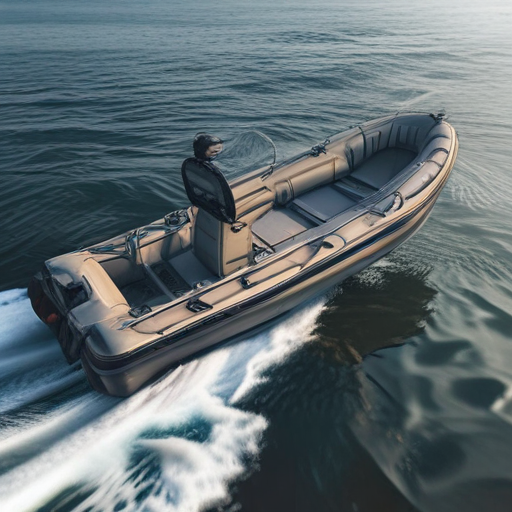
“Rigid Inflatable Boats (RIB)” Comparative Analysis
Rigid Inflatable Boats (RIBs) combine a solid hull with inflatable tubes, offering a versatile maritime solution. This comparative analysis considers their performance, durability, safety, and applications.
Performance: RIBs excel in both calm and rough waters, thanks to their rigid hull which provides stability and superior handling. The inflatable tubes add buoyancy, allowing for higher speeds and efficient fuel consumption. Compared to traditional boats, RIBs can often achieve similar performance with smaller engines.
Durability: Modern RIBs are typically constructed from robust materials like fiberglass or aluminum for the hull and synthetic rubbers or plastics (e.g., Hypalon or PVC) for the tubes. This combination ensures longevity and resistance to harsh marine environments. Traditional boats, while durable, can be more susceptible to impact damage due to their lack of cushioning provided by inflatable tubes.
Safety: The inherent buoyancy of RIBs, contributed by their inflatable tubes, makes them nearly unsinkable. In emergencies, the tubes help keep the boat afloat even when taking on water. Traditional boats rely more heavily on hull integrity for buoyancy, making them potentially more vulnerable in capsizing scenarios.
Applications: RIBs’ versatility and portability make them ideal for diverse uses, including rescue operations, military applications, commercial tours, and recreational activities like diving or fishing. Their lightweight structure allows for easy transport and quick deployment. In contrast, traditional boats are typically more specialized, limiting their adaptability across different tasks.
Conclusion: Rigid Inflatable Boats represent a marriage of performance, durability, and safety, tailored for flexibility across various maritime applications. Their design offers a distinct advantage over traditional boats, especially in situations demanding speed, reliability, and versatility. However, the choice between a RIB and a traditional boat ultimately depends on specific needs, such as the nature of the aquatic environment and intended use.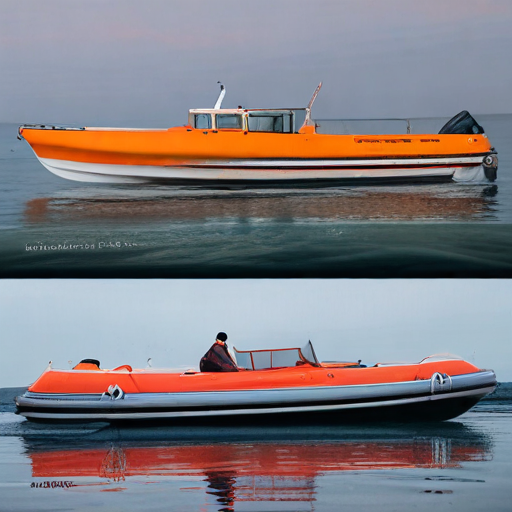
“Rigid Inflatable Boats (RIB)” Warranty and Support
Rigid Inflatable Boats (RIB) Warranty and Support
When investing in a Rigid Inflatable Boat (RIB), it is crucial to understand the warranty and support services available. Most reputable RIB manufacturers offer comprehensive warranty packages, typically ranging from 1 to 5 years, depending on the company and model. These warranties generally cover defects in materials and workmanship, ensuring that any issues arising from manufacturing faults are addressed at no extra cost to the owner.
Customers should ensure they receive clear documentation detailing what is covered under the warranty, including specifics about the hull, tubes, engine, and accessories. It’s essential to note that warranties often exclude damages caused by neglect, improper use, or unauthorized modifications.
Support services offered by manufacturers are integral to the RIB ownership experience. These usually encompass customer service hotlines, online support portals, and authorized service centers. Manufacturers may also provide maintenance schedules, user manuals, and troubleshooting guides to help owners maintain their RIBs in optimal condition.
For any warranty claims, prompt reporting of issues to the dealer or manufacturer is necessary. This typically involves providing proof of purchase and a detailed description of the problem. Authorized service centers, equipped with trained technicians, handle most repair and replacement tasks under warranty.
Owners should also inquire about extended warranty options and the availability of spare parts. A well-supported RIB can offer years of reliable service, provided it is maintained according to the manufacturer’s guidelines.
In conclusion, a robust warranty and reliable support are key factors when purchasing a RIB, ensuring peace of mind, safety, and prolonged enjoyment on the water. Always review the terms and conditions thoroughly and maintain regular communication with the dealer or manufacturer to keep your RIB in top condition.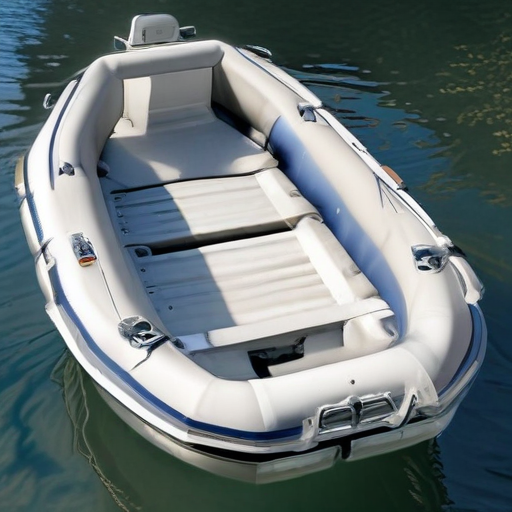
List “Rigid Inflatable Boats (RIB)” FAQ
Rigid Inflatable Boats (RIB) FAQ
1. What is a Rigid Inflatable Boat (RIB)?
A Rigid Inflatable Boat (RIB) combines a hard (usually fiberglass or aluminum) hull with inflatable tubes or “sponsons” along the sides. This design results in a lightweight, high-performance vessel.
2. What are the advantages of a RIB?
RIBs offer high buoyancy, stability, and excellent handling, even in rough seas. Their lightweight structure enables rapid acceleration and fuel efficiency.
3. Are RIBs safe?
Yes, RIBs are incredibly safe. The combination of a solid hull and inflatable tubes makes them nearly unsinkable, providing extra buoyancy and stability.
4. What materials are used for the inflatable tubes?
Inflatable tubes are commonly made from Hypalon (CSM) or PVC. Hypalon is more durable and UV-resistant but typically more expensive than PVC.
5. How is the performance of a RIB compared to a traditional boat?
RIBs generally offer superior performance, with excellent speed, maneuverability, and fuel efficiency, making them popular for rescue, military, and recreational purposes.
6. How do I maintain a RIB?
Regular maintenance includes checking for leaks in the tubes, inspecting the hull for damage, cleaning with mild soap and water, and applying UV protectant to the tubes.
7. What sizes do RIBs come in?
RIBs range from small dinghies around 3 meters to larger models over 12 meters, catering to different needs from leisure activities to professional applications.
8. Can I customize my RIB?
Yes, many manufacturers offer customization options including seating arrangements, console types, navigation equipment, and engine choices.
9. What types of engines can RIBs have?
RIBs can be powered by either outboard or inboard engines. Outboards are more common due to ease of maintenance and lower cost.
10. Are RIBs suitable for long-distance travel?
While RIBs are excellent for short trips, coastal exploration, and day boating, they are not typically designed for long-distance, offshore travel due to storage and comfort limitations.
11. Can RIBs be used in freshwater and saltwater?
Yes, RIBs are versatile and can be used in both freshwater and saltwater environments, although maintenance may vary slightly due to the corrosive nature of saltwater.
12. How do I choose the right RIB for my needs?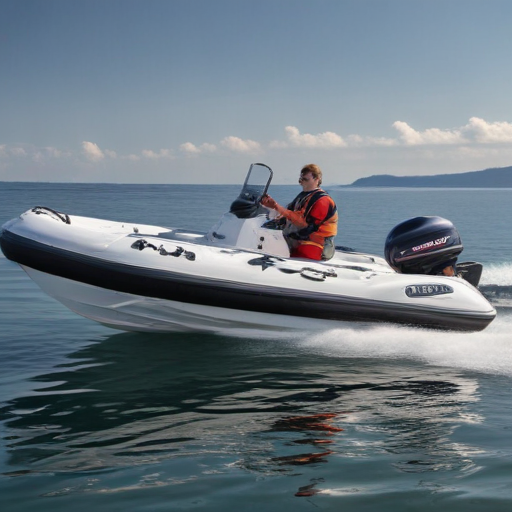
Top 10 FAQ with answer about Rigid Inflatable Boats (RIB) for Buyer Sourcing from China
Certainly! Here are the top 10 frequently asked questions about sourcing Rigid Inflatable Boats (RIB) from China, along with their answers:
1. What are RIBs made of?
Rigid Inflatable Boats typically consist of a solid hull and inflatable tubes made from durable materials like Hypalon or PVC.
2. How to ensure the quality of RIBs from Chinese manufacturers?
Ensure the manufacturer has certifications like ISO and CE. Request samples and share specific quality requirements. Conduct factory audits if possible.
3. Can these RIBs be customized?
Yes, most Chinese manufacturers offer customization options for size, color, accessories, and branding to meet specific buyer needs.
4. What is the typical MOQ (Minimum Order Quantity)?
The MOQ varies by manufacturer but commonly ranges from 1 to 5 units for smaller RIBs. For larger boats, the MOQ may be higher.
5. How long is the production lead time?
Production times vary but generally range from 30 to 60 days, depending on the size and complexity of the RIB and the manufacturer’s schedule.
6. Are there warranties available for RIBs sourced from China?
Most reputable manufacturers offer warranties, usually between 1 to 5 years, covering defects in materials and workmanship.
7. What are the shipping options available?
Shipping options include air freight for smaller boats and containers for larger quantities. SEA freight is more economical for bulk orders.
8. How can I ensure the RIBs meet international safety standards?
Verify that the RIBs comply with international standards such as ISO or CE, and request test results and certificates from the manufacturer.
9. What are the payment terms typically offered?
Common payment terms include a 30% deposit with the balance paid before shipment. L/C (Letter of Credit) is also a secure option.
10. Can I visit the factory before placing an order?
Yes, most manufacturers welcome factory visits. It is recommended to visit to ensure the production capability and quality control processes meet your standards.
Feel free to reach out to multiple suppliers, compare their offers, and perform due diligence to ensure a smooth and satisfactory sourcing experience.

